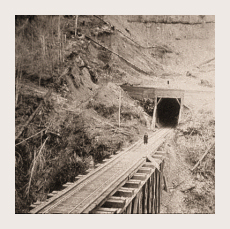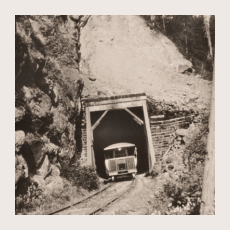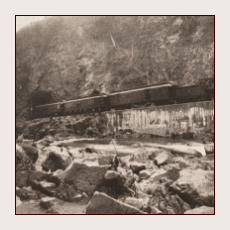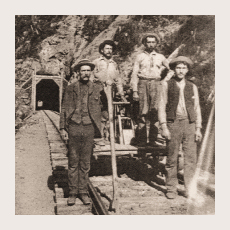The History Of Robe Canyon Railway
"The Everett & Monte Cristo Railroad was built in 1892—1893 to transport gold and silver ore from mines at Monte Cristo deep in the Cascade Mountains to a new smelter at Everett, WA. Railroad surveyor M. Q. Barlow selected a route that avoided the steep, treacherous canyon of the South Fork of the Stillaguamish upstream of Granite Falls. But eastern financiers and railroad “experts”, working for John D. Rockefeller, dictated a more direct route through the canyon in order to save expensive trestling required on Barlow’s route.
The canyon segment of the railway required boring of six tunnels through the steep canyon walls. Much of the railroad was built on wooden cribbing at the edge of what the eastern experts referred to as a 'trout stream' When the November floods swelled the “trout stream” into a thundering torrent of whitewater, the railroad was wiped out. Starting in 1892 and continuing through the railroad’s demise in 1933, the effort to maintain the rail line required yearly battles to repair damage from rockslides and fall flooding in the canyon.
 Bridge and tunnel |
 Gas car exits tunnel #3 |
After the turn of the century, the railway underwent a transition from ore transport to logging. But throughout its operation, the railway was famous as a scenic excursion to view the wild beauty of the canyon and the mountains beyond. In 1921, the Inn at Big Four near Silverton was built as a railroad destination resort. Trolley cars and automobiles outfitted with flanged wheels carried passengers on the scenic ride up the rail line, through the canyon, to the Inn and on to Monte Cristo."
|
|
 Train at tunnel #6 |
